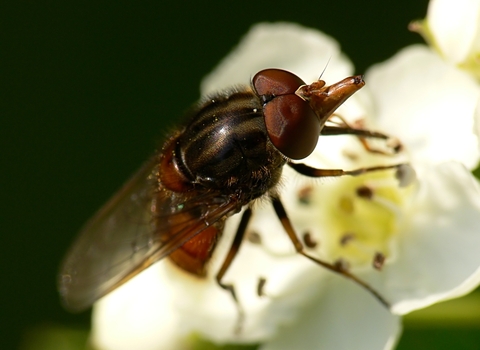
Heineken Fly ©Walwyn
Heineken fly
A common hoverfly, the Heineken fly has a distinctively long snout that enables it to take nectar from deeper flowers, reaching the parts other hoverflies cannot reach! It frequents hedgerows, gardens and woods.
Scientific name
Rhingia campestrisWhen to see
March to NovemberSpecies information
Category
Statistics
Length: 0.7-1.1cmCommon.
